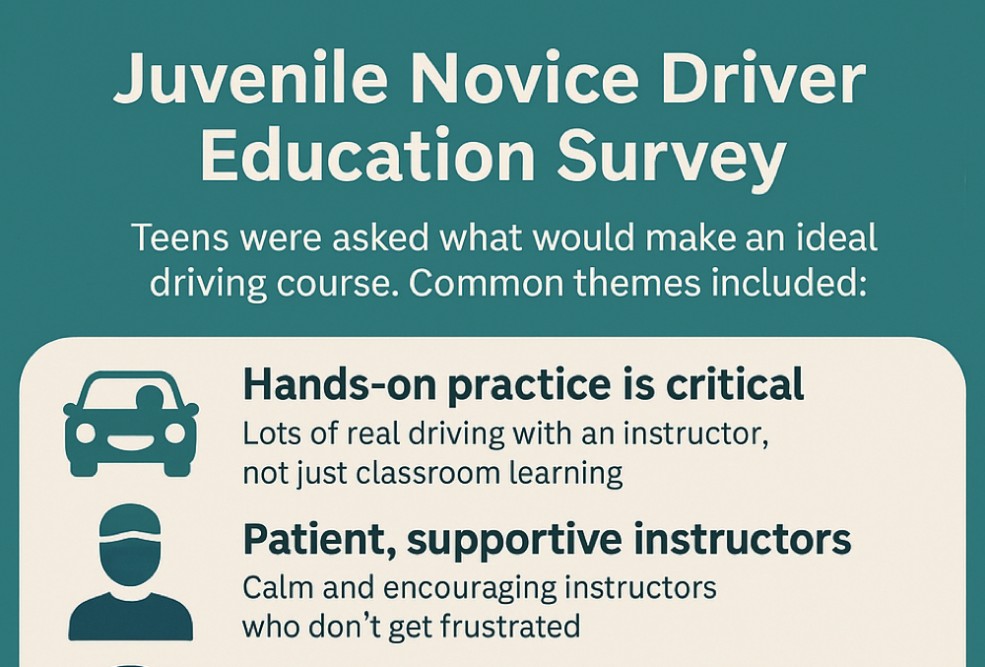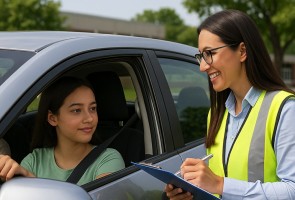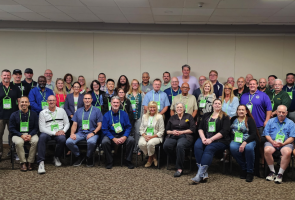
ADTSEA-FL Teen Driver Survey Summary - First 50
Survey Question:
“Imagine you and your friends are about to start learning how to drive. What kind of learning experience would help you become the most confident and experienced driver? Describe the details of an ideal course or program to teach you and your friends to drive.”
Results from the First 50 Respondents:
The survey results are anonymous, and we are posting the results of the first 50 responses.
Common Themes Identified:
1. Hands-On Practice is Critical
Teens overwhelmingly emphasized behind-the-wheel (BTW) time as the most important component. They want lots of real driving practice with an instructor, not just classroom learning.
2. Patient, Supportive Instructors
Teens noted that they value instructors who are calm, patient, and encouraging. A non-judgmental teaching style makes them feel more comfortable asking questions and trying new skills.
3. Combination of Simulation + Real Road Training
Several teens suggested simulator training to get familiar with handling a car in different conditions (rain, fog, emergency maneuvers) before practicing on real roads.
4. Step-by-Step Approach
They preferred starting with low-risk environments (parking lots, neighborhoods) and slowly progressing to highway and night driving as skills improve.
5. Focus on Real-World Situations
Teens wanted to be taught how to handle:
- Heavy traffic
- Bad weather conditions
- Emergency situations
- Distracted drivers
- Navigating new technology like GPS and Advanced Driver Assistance Systems (ADAS)
6. Longer, More Thorough Courses
Many said current Driver Education programs seem too short. They recommended longer courses that spread instruction over weeks or months rather than cramming it into a few sessions.
7. Peer Learning Opportunities
Some teens said it would help to learn in small groups where they can observe peers driving and learn from their mistakes and successes.
8. Parental Involvement (Structured, Not Overbearing)
Teens recognized the value of practicing with parents but preferred a structured plan or checklist so practice sessions were meaningful and aligned with what they learned from instructors.
9. Building Confidence Gradually
Teens asked for a focus on confidence-building exercises, such as repetition of tricky maneuvers (parallel parking, lane changing) until mastery.
10. Modern and Engaging Classroom Content
They recommended using interactive technology (videos, quizzes, virtual reality) to avoid “boring lectures” and make classroom learning more engaging.
Summary of the First 50 Responses:
Teens want more driving, less talking — with calm instructors, safe practice environments, real-world skills, group learning options, and modern tools to support a gradual and confidence-based approach.

Past Articles

Teen Driver Survey (Update)
Florida Teen Driver Survey: What Teens Say They Need From Driver Education Rolling results since...Read More

Teen Driver Survey
ADTSEA-FL Launches Teen Driver Survey to Hear Directly from Florida's Learners As part of our...Read More

DEACOS Driving Conversation November 2025
Turning Collaboration into Ownership Date: November 5, 2025 Host: ADTSEA-FL Audience: Driver...Read More

2025 ADTSEA National Conference
ADTSEA-FL at the 2025 ADTSEA National Conference In July 2025, ADTSEA-FL proudly represented...Read More
